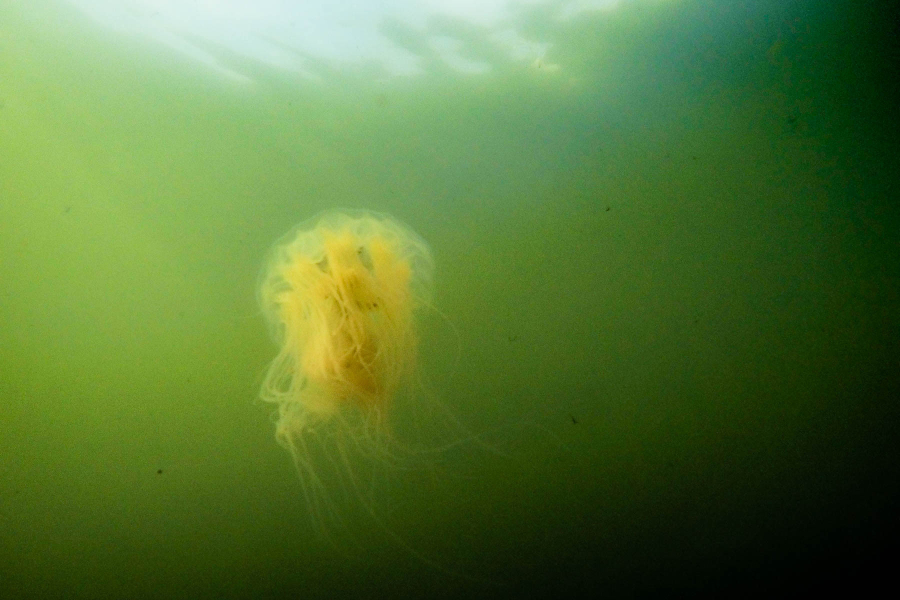‘Winter jellyfish’ basks in cold Bay waters
When temperatures drop, the lion’s mane jellyfish thrives

A lion's mane jellyfish visits Spa Creek in Annapolis, Maryland, on January 18, 2017. Sometimes called the “winter jellyfish,” the lion’s mane jellyfish (Cyanea capillata) visits the Chesapeake Bay region from late November through March. Their preference for frigid, Arctic temperatures means they only venture down from northern latitudes when waters are sufficiently cold.
The type of lion’s mane jellyfish that visits the Bay is planktonic, meaning it floats where the currents take it—so while the lion’s mane is not an uncommon sight in the Chesapeake Bay, its presence can be unpredictable. When water currents and chilly temperatures align to bring them to the area, though, they’re easy to spot, because they prefer to float near the water’s surface.
Like the sea nettles that are prevalent in summer months, lion’s mane jellyfish have stinging tentacles. But since fewer people are out swimming in the chilly waters of January—except, perhaps, those participating in a Polar Bear Plunge—swimmers are less likely to suffer the lion’s mane’s sting.
Lion’s mane jellyfish that visit the Bay average about four to six inches in diameter, similar in size to the sea nettle. Travel further north, however, and you may encounter a much larger specimen. In 1870, the largest recorded lion’s mane jellyfish washed up along a beach in Massachusetts: its body measured more than seven feet in diameter, and its tentacles were 120 feet long.
Learn more about jellyfish that can be found in the Chesapeake Bay.

Comments
Spotted 5 this morning in the Choptank river off my pier
Hundreds winter jelly off of Franklin manor pier this morning-April 17, 2025
Hundreds winter jelly off of Franklin manor pier this morning-April 17, 2025
Dozens of Lions mane jellies in south river, md on 30 march 2025
Saw them all along shoreline on Herring Bay. Thousands. Had to keep my dogs out of the water.
Saw a bunch in Parrotts Creek, VA yesterday. Thought it was crazy they were out in such cold weather, but I didn’t know there were “winter” jellyfish.
Thousands of those jellyfish with reddish center in Whitehall Creek. Probably millions. Never saw them before, let alone in March.
3.21.23 Sandy Point and Rock Hall today; hundreds of small jellyfish that looked like sunny-side up eggs. Largest about 4" across on the bell.
Lots of them are pulsing against the ice sheet. First time I've ever seen sea nettles in winter!
They were not seen around the mid Bay Area until recently? I certainly don’t remember seeing them. If I am correct, why are the currents changing to bring more out way?
John
Thank you!
Your comment has been received. Before it can be published, the comment will be reviewed by our team to ensure it adheres with our rules of engagement.
Back to recent stories